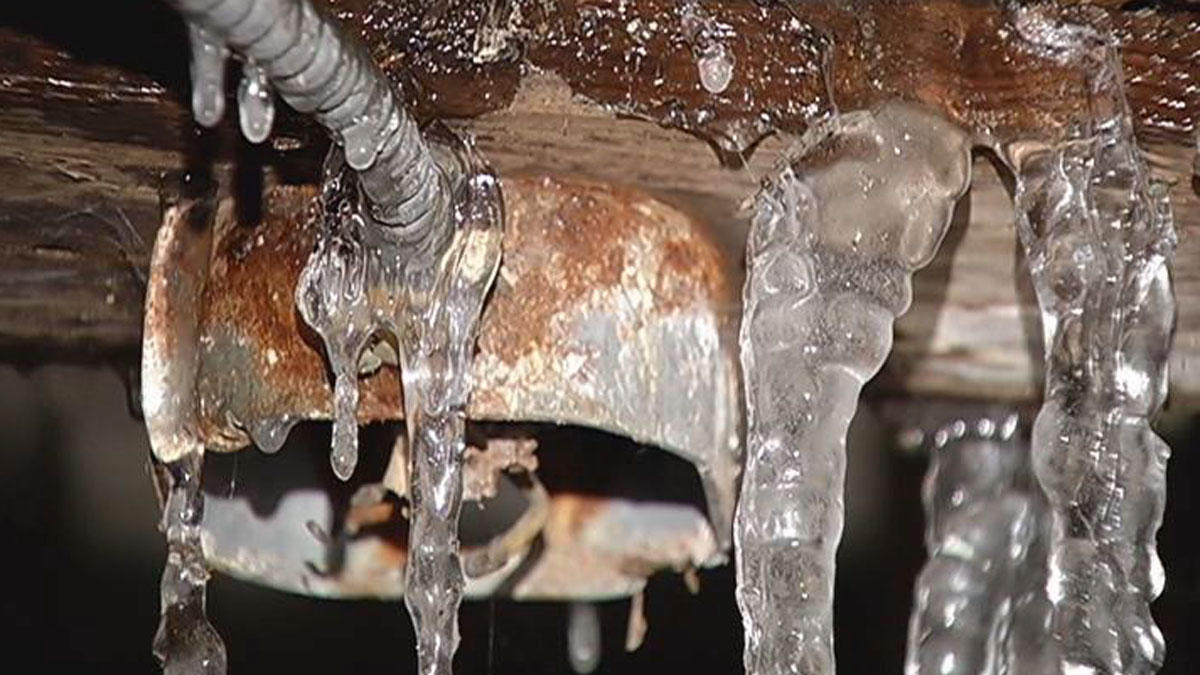Prevent Frozen Pipes in Cold Weather: Professional Tips
Prevent Frozen Pipes in Cold Weather: Professional Tips
Blog Article
How do you really feel about Helpful Tips to Prevent Frozen Pipes this Winter?

Cold weather can ruin your pipes, particularly by freezing pipelines. Right here's just how to avoid it from taking place and what to do if it does.
Introduction
As temperature levels drop, the threat of frozen pipes rises, potentially bring about costly repairs and water damages. Recognizing exactly how to avoid frozen pipelines is critical for home owners in chilly climates.
Recognizing Frozen Pipes
What creates pipes to ice up?
Pipes freeze when revealed to temperatures listed below 32 ° F (0 ° C) for extended durations. As water inside the pipes ices up, it expands, taxing the pipe wall surfaces and possibly causing them to break.
Risks and problems
Icy pipes can bring about supply of water disturbances, residential or commercial property damages, and pricey repairs. Burst pipes can flood homes and trigger extensive structural damage.
Indications of Frozen Piping
Determining frozen pipelines early can prevent them from breaking.
Just how to determine frozen pipelines
Seek decreased water flow from faucets, uncommon smells or noises from pipes, and noticeable frost on revealed pipelines.
Avoidance Tips
Shielding at risk pipes
Cover pipelines in insulation sleeves or use warmth tape to secure them from freezing temperatures. Concentrate on pipes in unheated or external areas of the home.
Heating strategies
Keep indoor areas sufficiently warmed, specifically areas with pipes. Open cupboard doors to allow cozy air to circulate around pipelines under sinks.
Safeguarding Exterior Pipes
Garden pipes and exterior faucets
Detach and drain yard tubes before winter season. Set up frost-proof faucets or cover exterior taps with insulated caps.
What to Do If Your Pipes Freeze
Immediate actions to take
If you think frozen pipes, keep faucets available to soothe pressure as the ice melts. Use a hairdryer or towels soaked in hot water to thaw pipes gradually.
Long-Term Solutions
Architectural adjustments
Think about rerouting pipelines far from outside wall surfaces or unheated locations. Include extra insulation to attic rooms, basements, and crawl spaces.
Upgrading insulation
Purchase top quality insulation for pipes, attics, and wall surfaces. Appropriate insulation aids preserve regular temperatures and lowers the threat of frozen pipes.
Conclusion
Stopping frozen pipelines needs proactive actions and quick responses. By comprehending the causes, signs, and safety nets, house owners can secure their pipes during cold weather.
5 Ways to Prevent Frozen Pipes
Drain Outdoor Faucets and Disconnect Hoses
First, close the shut-off valve that controls the flow of water in the pipe to your outdoor faucet. Then, head outside to disconnect and drain your hose and open the outdoor faucet to allow the water to completely drain out of the line. Turn off the faucet when done. Finally, head back to the shut-off valve and drain the remaining water inside the pipe into a bucket or container. Additionally, if you have a home irrigation system, you should consider hiring an expert to clear the system of water each year.
Insulate Pipes
One of the best and most cost-effective methods for preventing frozen water pipes is to wrap your pipes with insulation. This is especially important for areas in your home that aren’t exposed to heat, such as an attic. We suggest using foam sleeves, which can typically be found at your local hardware store.
Keep Heat Running at 65
Your pipes are located inside your walls, and the temperature there is much colder than the rest of the house. To prevent your pipes from freezing, The Insurance Information Institute suggests that you keep your home heated to at least 65 degrees, even when traveling. You may want to invest in smart devices that can keep an eye on the temperature in your home while you’re away.
Leave Water Dripping
Moving water — even a small trickle — can prevent ice from forming inside your pipes. When freezing temps are imminent, start a drip of water from all faucets that serve exposed pipes. Leaving a few faucets running will also help relieve pressure inside the pipes and help prevent a rupture if the water inside freezes.
Open Cupboard Doors
Warm your kitchen and bathroom pipes by opening cupboards and vanities. You should also leave your interior doors ajar to help warm air circulate evenly throughout your home.

I am very occupied with How To Avoid Freezing Pipes and I hope you liked the new blog entry. For those who enjoyed reading our blog post if you please don't forget to share it. Thank you for your time. Revisit us soon.
Call Today Report this page